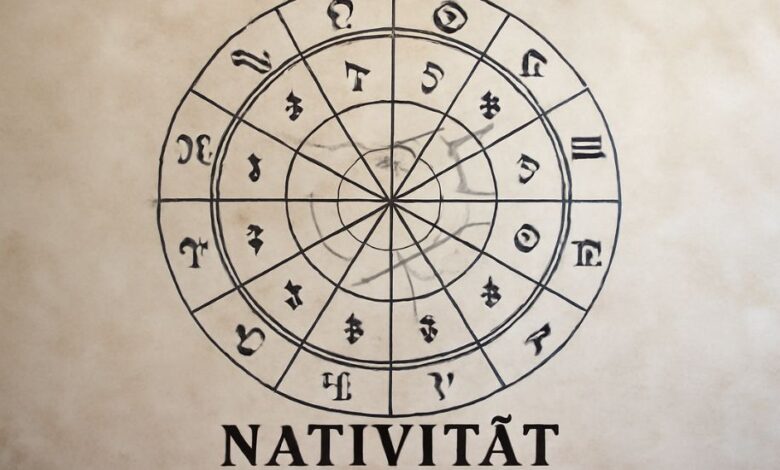Nativität: The Deep Meaning and Astrological Power of the Natal Chart

In the vast world of astrology, few terms carry as much historical, symbolic, and interpretive importance as nativität. Though the word may appear unusual to modern English-speaking readers, its roots stretch back through centuries of astrological tradition. Whether you are a student of astrology, a casual enthusiast, or a researcher interested in ancient cosmological concepts, understanding what nativität really means can enrich your appreciation of the astrological lens through which humans have long interpreted life, destiny, and personality.
This article explores nativität in depth—its linguistic origins, historical development, astrological significance, practical use, and cross-cultural connections. By the end, you will have a clear and complete understanding of how this ancient concept still influences modern astrology today.
What Is Nativität? A Clear Definition
The word nativität is derived from the Latin nativitas, meaning “birth.” In German, the term traditionally refers to the position of the celestial bodies at the exact moment of a person’s birth. In modern astrological language, nativität corresponds directly to what English speakers call the natal chart, birth chart, or genethliacal horoscope.
In essence, nativität is the snapshot of the sky at birth, a cosmic diagram that astrologers interpret to understand a person’s character, inclinations, strengths, weaknesses, and potential life path.
While the English word “nativity” is sometimes used the same way, it more commonly refers to the birth of Jesus Christ or to the general idea of one’s origins. In astrology, however, nativität carries a very specialized meaning, specifically related to the practice of calculating and interpreting a birth chart.
The Linguistic and Historical Origins of Nativität
Etymology
-
Latin: nativitas – “birth,” “origin,” “bringing forth”
-
Old High German and Medieval Latin influence
-
Adopted into German as Nativität, retaining both its literal and symbolic meanings
Historically, the term gained prominence during the Middle Ages, when astrological manuscripts—many translated from Arabic or Greek—were circulated throughout Europe. Medieval astrologers used terms like “die Nativität stellen” (to cast a birth chart) to describe the process of calculating planetary positions.
The Ancient Roots of the Concept
Although the word nativität is Germanic-Latin, the concept stems from much older traditions:
-
Babylonian astrology first connected birth with planetary influence.
-
Hellenistic astrologers like Vettius Valens formalized natal astrology.
-
Arabic scholars preserved and expanded natal techniques during the Islamic Golden Age.
-
European Renaissance astrologers adopted these methods and used the German term nativität in their texts.
Thus, nativität is not merely a word—it represents thousands of years of astrological thought.
Nativität in Astrology: The Heart of Natal Interpretation
What the Nativität Represents
The nativität captures:
-
Planetary positions
-
The Ascendant (rising sign)
-
The Midheaven (career point)
-
12 astrological houses
-
Aspects (planetary relationships)
-
Zodiac signs
Astrologers read these components to understand the deeper layers of a person’s identity.
Why the Moment of Birth Matters
Astrology is built on the idea that the universe is interconnected, and significant moments—such as birth—carry imprints of cosmic rhythms.
The nativität is considered a unique spiritual and energetic “blueprint,” symbolizing the individual’s relationship to the cosmos.
The Components of the Nativität Explained
To understand how astrologers read a nativität, it helps to break down its key components.
1. The Planets
Each planet represents a different psychological or energetic principle:
-
Sun – core identity
-
Moon – emotions
-
Mercury – communication
-
Venus – love and values
-
Mars – action and drive
-
Jupiter – growth
-
Saturn – discipline
-
Uranus, Neptune, Pluto – generational and transformative influence
2. The Signs
The zodiac signs show how planetary principles express themselves. For example:
-
A Mars in Aries behaves boldly.
-
A Mars in Pisces behaves intuitively.
3. The Houses
The houses describe where in life these energies manifest:
-
1st House – identity
-
2nd House – finances
-
7th House – relationships
-
10th House – career
4. Aspects
Planetary angles reveal internal dynamics:
-
Conjunctions – blending
-
Squares – challenges
-
Trines – flow
-
Oppositions – polarity
Combined, these form the full picture of a person’s nativität.
Historical Use: How Ancient Astrologers Worked With the Nativität
Throughout antiquity and medieval Europe, astrologers devoted intense study to the nativität. They believed it could reveal:
-
Longevity
-
Health patterns
-
Talents and temperament
-
Fate and fortune
-
Important life periods
Astrologers like Ptolemy and Valens produced detailed instructions for interpreting nativities, many still referenced today.
Medieval European astrologers, writing in Latin and German, preserved the word nativität in treatises, making it a standard term in continental astrological literature.
Cross-Cultural Parallels to Nativität
Though the word is German, the concept of a birth-based cosmic map exists worldwide.
Hellenistic Astrology
The direct predecessor of European natal astrology.
Vedic Astrology (India)
Uses the Janma Kundali, a natal chart based on sidereal zodiac calculations.
Chinese Astrology
Birth date and time are used to compute one’s BaZi (Four Pillars of Destiny).
Babylonian and Egyptian Astrology
Earliest systems tying cosmic patterns to birth traits.
Across cultures, birth remains a symbolically charged moment—making the idea behind nativität nearly universal.
How Modern Astrologers Use the Nativität
Today, astrologers interpret the nativität for many purposes:
Personality & Self-Understanding
Understanding core needs, values, motivations, emotions.
Life Path & Career
What professions resonate naturally with one’s planetary structure?
Relationships
Compatibility readings use nativitäts from two individuals (synastry).
Cycles & Timing
Astrologers use the nativität as a base for:
-
Transits
-
Progressions
-
Solar returns
These help interpret life phases and personal development.
Psychological and Spiritual Growth
Modern astrology uses the nativität as a tool for self-reflection and healing.
The Practical Process of Creating a Nativität
To calculate a nativität accurately, three pieces of information are essential:
-
Exact birth time
-
Birth date
-
Birth location
These determine the Ascendant and house system.
Modern Tools
Today, software and websites generate charts instantly, but traditional astrologers used:
-
Ephemerides
-
Mathematical tables
-
Geometric techniques
Despite technological change, the symbolic meaning of the nativität remains the same.
Interpretive Power: Why Nativität Still Matters Today
Though some consider astrology a pseudoscience, millions still find meaning, guidance, and psychological insight from their nativität.
1. Personal Insight
The chart can illuminate internal conflicts, gifts, and life direction.
2. Emotional Awareness
Moon placements, for example, help people understand emotional patterns.
3. Life Purpose
The Midheaven and nodes often reveal powerful themes of calling.
4. Relationship Harmony
Understanding another person’s nativität fosters empathy.
5. Spiritual Meaning
Many view the chart as a symbolic map of the soul.
Whether interpreted literally, metaphorically, or psychologically, the nativität remains a valuable tool for self-exploration.
Common Misunderstandings About Nativität
It is not fortune-telling
Astrologers emphasize patterns, tendencies, and energies—not fixed predictions.
It does not replace personal choice
The nativität shows potential, not certainty.
Scientific accuracy is debated
Astrology is symbolic, meaning its value is found in meaning-making rather than empirical measurement.
It is more complex than Sun-sign horoscopes
A full nativität is far more detailed than newspaper astrology.
Why Interest in Nativität Is Growing
In recent years:
-
Younger generations are rediscovering astrology.
-
Birth charts are common on social media.
-
Psychological astrology is becoming mainstream.
-
People seek self-awareness in chaotic times.
The nativität offers a structured, symbolic way of understanding personal identity, making it highly appealing today.
Conclusion: The Enduring Power of the Nativität
At its core, the nativität is more than an astrological diagram—it is a symbolic mirror of the moment a life begins. For centuries, astrologers have used it to decode the mysteries of personality, destiny, and human potential. Whether one sees it as a spiritual compass, a psychological map, or a cultural artifact, its impact is undeniable.
If you are exploring astrology for personal growth, historical curiosity, or deeper cosmic understanding, studying your own nativität can be a transformative experience. It invites you to see yourself not just as an individual, but as part of a vast rhythmic universe.
For more insightful articles on astrology, symbolism, and culture, visit Blog Loom.
You may also visit: Good Excuses to Leave Work Early: Smart, Bulletproof, and Believable Reasons


